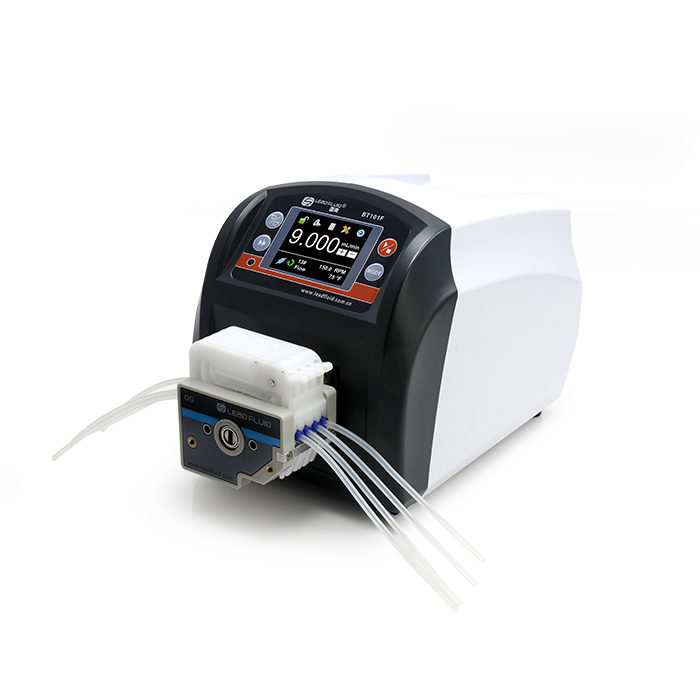Maintaining a low-flow peristaltic pump is crucial to ensure consistent performance, accuracy, and longevity. Here are some maintenance steps to consider:
- Regular Cleaning: Clean the exterior surfaces of the pump and its components regularly to remove dust, debris, and contaminants. Use a mild detergent solution and a soft cloth or brush to clean the pump housing, tubing, and rollers. Ensure thorough cleaning to prevent buildup that could affect pump performance.
- Tubing Inspection and Replacement: Inspect the tubing used in the peristaltic pump for signs of wear, degradation, or blockages. Replace the tubing periodically according to the manufacturer’s recommendations or when visible signs of damage are observed. Use high-quality, compatible tubing that is resistant to chemical corrosion and wear.
- Roller Maintenance: Check the condition of the pump rollers or shoes that compress the tubing to create fluid flow. Clean the rollers regularly to remove any debris or residue that could affect their grip on the tubing. Inspect for signs of wear or damage, such as flat spots or uneven wear, and replace worn rollers as needed.
- Lubrication: Some low-flow peristaltic pumps may require lubrication for smooth operation of moving parts,low flow peristaltic pump such as rollers or bearings. Follow the manufacturer’s recommendations for lubricating the pump mechanism using compatible lubricants. Apply lubricant sparingly and avoid excessive buildup or contamination of fluid pathways.
- Seal Inspection: Check the seals, gaskets, and O-rings of the peristaltic pump for signs of wear, deterioration, or leakage. Replace worn or damaged seals promptly to prevent fluid leaks or contamination. Ensure that seals are properly seated and tightened to maintain airtight and leak-free connections.
- Motor and Electronics Maintenance: Inspect the motor, drive mechanism, and electronic components of the peristaltic pump for signs of overheating, abnormal noise, or malfunction. Clean and lubricate moving parts as needed, and ensure proper ventilation and cooling to prevent overheating. Check electrical connections and wiring for tightness and integrity.
- Filter Replacement: If the peristaltic pump is equipped with filters or particle traps, inspect and replace them regularly to prevent clogging and maintain fluid purity. Use filters with appropriate pore sizes and materials compatible with the fluids being pumped to ensure effective filtration without impeding flow.
- Storage and Handling: Store the low-flow peristaltic pump in a clean, dry, and well-ventilated environment when not in use. Protect the pump from exposure to moisture, dust, direct sunlight, and extreme temperatures that could degrade its performance or damage sensitive components. Handle the pump with care to avoid physical damage or mishandling.
- Documentation and Record-Keeping: Maintain records of maintenance activities, calibration results, repairs, and any operational issues encountered during the use of the peristaltic pump. Keep track of replacement parts, consumables, and service history to facilitate troubleshooting and ensure compliance with regulatory requirements.
By following these maintenance steps and best practices, you can ensure the reliable performance, accuracy, and longevity of a low-flow peristaltic pump, enabling precise fluid handling in various laboratory, research, and industrial applications. Regular maintenance and care are essential for maximizing the efficiency and effectiveness of peristaltic pumping systems while minimizing the risk of downtime or operational issues.
